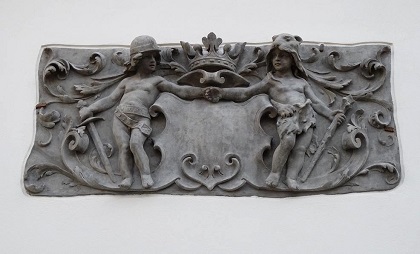One of the most important monuments of Lublin is the church and monastery of the Dominican Order. The Dominicans arrived in Lublin in the 1230s. In 1342, after the Tatar invasion, King Casimir the Great ordered building a Gothic,single-nave, brick church in place of the previous, wooden one. It was named as the church of St. Stanislaus Bishop and Martyr.
The church was rebuilt several times. The largest reconstruction took place after the great fire in 1575. The building received decorations in the characteristic style of the Lublin Renaissance. The architect responsible for the reconstruction was Rudolf Negroni. In XVII and XVIII a number of side chapels were added to the church, including the Firlej family chapel, adorned with intricate stucco decoration and housing a renaissance tombstone of Mikołaj and Piotr Firlej; rich with stuccos Ossoliński family chapel, and the Tyszkiewicz family chapel with a XVII century polychromes depicting the Last Judgement on the dome. In 1967, Pope Paul VI granted the Dominican church the title of a minor basilica.
An adjacent monastery was being build together with the church from the XV to XVII century. In its oldest part, cross-rib vaults and a portal from the XV century have preserved. One of the most interesting places in the monastery is the former refectory with a characteristic palm vault, based on one column. According to the monastic tradition, the Lublin Union was signed in the refectory in 1569. A solemn thanksgiving service was held in the church after signing the act.
For several centuries the Lublin Dominicans were in possession of one of the world's largest relics of the True Cross. It was supposed to arrive to Lublin from Kyiv. In 1991 the relic was stolen and have never been recovered.
Since the last renovation works in the the monastery were completed in 2012, historic exhibits connected with the order have been displayed in the northern wing of the building. The most valuable objects that can be seen in the treasury include the ordinals, vestments, goldsmith products, and the cross associated with the swearing-in of the Union of Lublin.
The last major renovation took place in 2018. Both the church and the monastery with the treasury are partially available for the tourists
The site was distinguished with the European Heritage Label in 2007.





